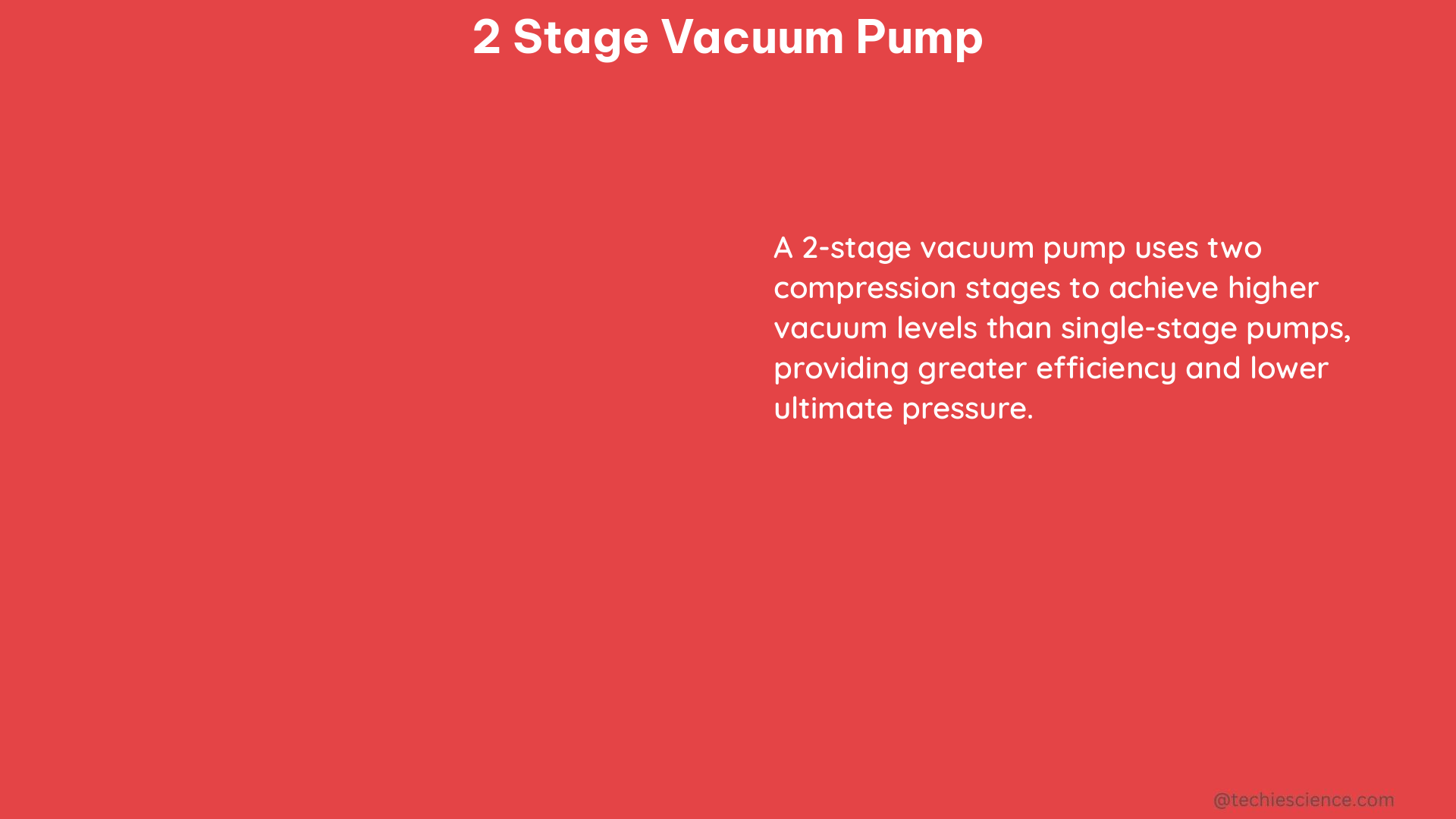Two-stage vacuum pumps are a critical component in various industries, from analytical instrumentation to electron microscopy, where precise vacuum conditions are essential for accurate and reliable measurements. These advanced pumps utilize a two-stage compression process to achieve higher vacuum levels than their single-stage counterparts, making them indispensable tools in the pursuit of scientific and technological excellence.
Understanding the Pumping Speed of 2 Stage Vacuum Pumps
The pumping speed of a two-stage vacuum pump is a crucial metric that determines its efficiency and suitability for specific applications. This parameter is typically measured in liters per second (L/s) or cubic feet per minute (CFM), and it represents the volume of gas that the pump can evacuate from the system per unit of time.
For example, a two-stage vacuum pump with a pumping speed of 5 L/s can evacuate 5 liters of gas every second, making it an ideal choice for applications that require rapid evacuation of large volumes of gas. In contrast, a pump with a lower pumping speed may be more suitable for applications that involve smaller volumes or slower evacuation rates.
Exploring the Ultimate Vacuum Level of 2 Stage Vacuum Pumps

The ultimate vacuum level is the lowest achievable pressure that a two-stage vacuum pump can reach, and it is typically measured in pascals (Pa) or inches of mercury (in. Hg). This parameter is a critical consideration for applications that require extremely low-pressure environments, such as mass spectrometry or electron microscopy.
A two-stage vacuum pump with an ultimate vacuum level of 10^-6 Pa, for instance, can create a vacuum that is a million times less dense than the Earth’s atmosphere, making it an indispensable tool for researchers and engineers working at the forefront of scientific exploration.
Analyzing the Compression Ratio of 2 Stage Vacuum Pumps
The compression ratio of a two-stage vacuum pump is the ratio of the inlet pressure to the outlet pressure of the pump. This metric represents how effectively the pump can compress the gas, with a higher compression ratio indicating a more efficient compression process.
For example, a two-stage vacuum pump with a compression ratio of 100:1 can compress the gas by a factor of 100, making it an excellent choice for applications that require high levels of gas compression, such as in the production of semiconductor devices or the operation of specialized analytical equipment.
Evaluating the Power Consumption of 2 Stage Vacuum Pumps
The power consumption of a two-stage vacuum pump is typically measured in watts (W) or horsepower (HP), and it represents the amount of electrical energy that the pump consumes to generate the desired vacuum level.
A two-stage vacuum pump with a power consumption of 1000 W, for instance, can generate a vacuum using 1 kilowatt of electrical power. This information is crucial for engineers and technicians who need to ensure that their vacuum systems are energy-efficient and cost-effective to operate.
Monitoring the Operating Temperature of 2 Stage Vacuum Pumps
The operating temperature of a two-stage vacuum pump is the temperature at which the pump operates during normal operation, and it is usually measured in degrees Celsius (°C) or Fahrenheit (°F). This parameter is important for ensuring the pump’s reliability and longevity, as well as for maintaining the optimal performance of the vacuum system.
For example, a two-stage vacuum pump with an operating temperature of 50°C can operate at a temperature that is 32°C above the ambient temperature, which may be necessary in certain industrial or laboratory settings where the surrounding environment is particularly warm or humid.
Assessing the Noise Level of 2 Stage Vacuum Pumps
The noise level of a two-stage vacuum pump is the sound pressure level that the pump generates during normal operation, and it is typically measured in decibels (dB). This parameter is crucial for ensuring the comfort and safety of the operators who work in close proximity to the vacuum system.
A two-stage vacuum pump with a noise level of 60 dB, for instance, generates a sound pressure that is equivalent to a normal conversation, making it a relatively quiet and user-friendly option for applications where noise levels are a concern, such as in medical or research facilities.
Conclusion
Two-stage vacuum pumps are essential tools in a wide range of industries, from analytical instrumentation to electron microscopy, where precise vacuum conditions are crucial for accurate and reliable measurements. By understanding the key performance metrics of these advanced pumps, such as pumping speed, ultimate vacuum level, compression ratio, power consumption, operating temperature, and noise level, engineers and technicians can optimize their vacuum systems and ensure that they are operating at peak efficiency.
Whether you’re working on cutting-edge scientific research or maintaining critical industrial equipment, mastering the intricacies of two-stage vacuum pumps is a vital skill that can unlock new levels of precision, productivity, and innovation.
References:
- HVAC-Talk: Vacuum Pump CFM – Does It Matter?
- Power Motion Tech: Fundamentals of Vacuum
- LinkedIn: Two-Stage Rotary Vane Vacuum Pump Market Size & Share
- Edwards Vacuum: Vacuum Systems for Analytical Instruments
- Mechanics Industry: Fundamentals of Vacuum Pumps

The lambdageeks.com Core SME Team is a group of experienced subject matter experts from diverse scientific and technical fields including Physics, Chemistry, Technology,Electronics & Electrical Engineering, Automotive, Mechanical Engineering. Our team collaborates to create high-quality, well-researched articles on a wide range of science and technology topics for the lambdageeks.com website.
All Our Senior SME are having more than 7 Years of experience in the respective fields . They are either Working Industry Professionals or assocaited With different Universities. Refer Our Authors Page to get to know About our Core SMEs.